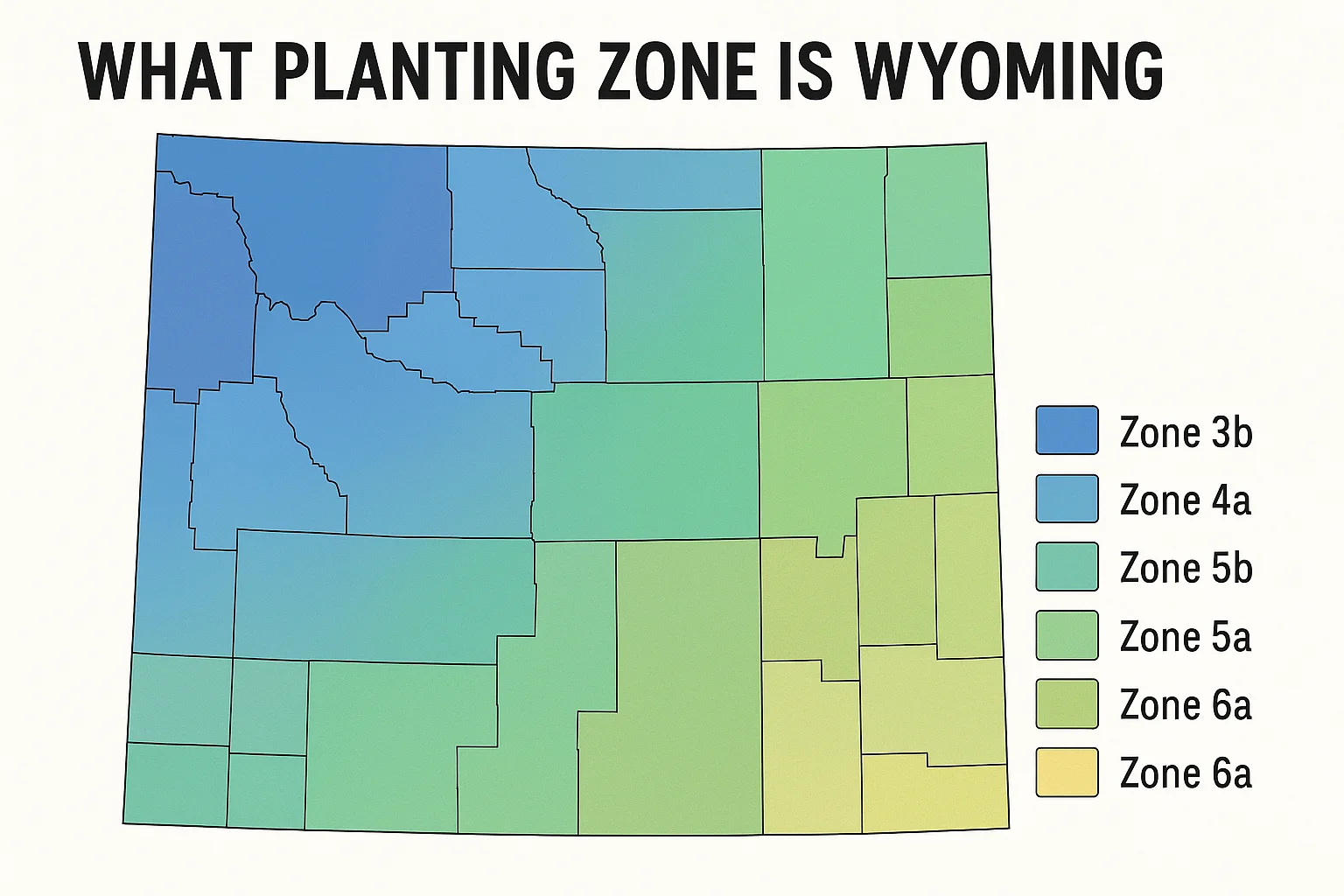What Planting Zone is Wyoming?[Map, Cities, and Growing Tips]

If you’re planning a garden or landscape project, understanding what planting zone is Wyoming is crucial. Planting zones help gardeners determine which plants will survive the state’s cold winters and short growing seasons. Wyoming’s diverse elevations and climates mean the planting zones can vary significantly, even within short distances.
In this guide, we’ll explain what planting zone is Wyoming, how it affects your plant choices, and give you practical tips for gardening in the Equality State.
🗺️ What Planting Zone is Wyoming?
Wyoming’s planting zones range from 3a to 5b, with the majority of the state falling within zones 4a, 4b, and 5a. Higher elevations in the northwest and mountainous regions are typically in zones 3a and 3b, while lower elevations in southern and eastern Wyoming are primarily in zone 5a and 5b.
| Region | USDA Planting Zone |
|---|---|
| Northwest Wyoming (Yellowstone, Teton) | Zone 3a–3b |
| Central Wyoming (Casper, Riverton) | Zone 4a–4b |
| Southeast Wyoming (Cheyenne, Laramie) | Zone 5a–5b |
| Northeast Wyoming (Gillette, Sheridan) | Zone 4a–5a |
If you’re asking what planting zone is Wyoming, it’s essential to consider your specific location, as elevation and microclimates play a huge role.
🌱 Why Knowing What Planting Zone is Wyoming Matters?
Knowing what planting zone is Wyoming helps gardeners select plants that can survive the state’s long, harsh winters. It influences:
- Which perennials will survive year after year
- Best timing for sowing seeds
- Choosing cold-hardy trees and shrubs
- Avoiding plant loss due to unexpected frosts
For instance, a tree that thrives in Zone 6 might not make it through a Wyoming winter in Zone 3a. On the flip side, many alpine and native species are perfectly suited to Wyoming’s colder zones.
📍 Wyoming Planting Zones by City
Here’s a quick reference for what planting zone is Wyoming in major cities:
| City | USDA Zone |
|---|---|
| Cheyenne | Zone 5a |
| Casper | Zone 4b |
| Laramie | Zone 4a |
| Gillette | Zone 4b |
| Rock Springs | Zone 4b |
| Sheridan | Zone 5a |
| Riverton | Zone 4b |
| Jackson | Zone 3b |
For gardeners wondering what planting zone is Wyoming in their area, using a USDA zip code lookup is the most accurate method.
🌿 Gardening Challenges & Tips for Wyoming’s Planting Zones
Gardening in Wyoming means dealing with:
- Short growing seasons
- Late spring and early fall frosts
- High winds and low humidity
- Variable microclimates
Tips to succeed:
✅ Choose native and cold-hardy plants
✅ Use raised beds and row covers to extend the season
✅ Consider cold frames or hoop houses
✅ Mulch heavily to protect roots from extreme cold
✅ Be cautious with planting dates—watch for late frosts
Understanding what planting zone is Wyoming will help you avoid costly mistakes and improve your gardening success.
Still Unsure About Your Zone?
To get an exact zone for your zip code, check the official USDA Plant Hardiness Zone Map. Just enter your zip and you’ll see a color-coded zone that’s accurate down to your neighborhood.
Knowing what planting zone is Wyoming is the first step in planning a garden that lasts.
🧮 Recommended Calculators for Wyoming Gardeners
Want to plan your garden accurately? Use these tools:
- Soil Volume Calculator – Know exactly how much soil you need for raised beds.
- Plant Spacing Calculator – Prevent overcrowding and maximize yield.
- Indoor Plant Watering Calculator – Perfect for your houseplants or container garden.
📅 Planting Schedule by Wyoming Zone
| Plant Type | Zone 3a–3b | Zone 4a–4b | Zone 5a–5b |
|---|---|---|---|
| Cool-season crops | Late May | Early May | Mid-April |
| Warm-season crops | Mid-June | Late May | Mid-May |
| Perennials | Late April–Early May | Mid-April | Early April |
This timeline helps align your planting with what planting zone is Wyoming in your location.
✅ Final Thoughts: What Planting Zone is Wyoming?
To sum it up, what planting zone is Wyoming depends largely on elevation and location. From the alpine regions of Jackson to the plains of Cheyenne, Wyoming’s zones range from 3a to 5b.
Before you plant, make sure you know your zone. It will save you time, money, and frustration — and set you up for a successful, thriving garden.
